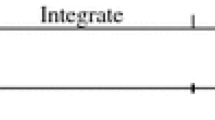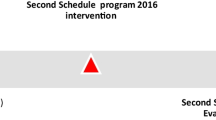Abstract
Based upon substantial high firm turnover rates, various policy incentives, and developed subcontracting-networks, this paper investigates structure and firm-specific factors that determine the entry and exit rate across industries. The interaction between entry and exit rates of the industry is incorporated in the study, namely the "displacement", "replacement" and "instantaneous causal" effects. The regression results indicate that entry and exit rates are determined by different measures of entry or exit barriers but the effects are not fully symmetric. It is also evident that underlying entry or exit sunk- costs introduced the instantaneous movement of entry and exit rates. In addition, the entry of new plants has a moderate effect to facilitate the displacement or market selection process to displace the inefficient producers but no significant replacement effect is found. The policy implication being that the government support encourages entry it also increases the industry failure rates.
Similar content being viewed by others
References
Acs, Zoltan J. and David B. Audretsch, 1989, 'Small-firms in U.S. Manufacturing: A First Report', Economic Letters 31(4), 399-402.
Aw, Bee Yan, Xiaomin Chen and Mark J. Roberts, 1997, 'Firm-level Evidence on Productivity Differentials, Turnover, and Exports in Taiwanese Manufacturing', NBER working paper 6235, October 1997.
Audretsch, David B., 1995, Innovation and Industry Evolution, Cambridge: MIT Press.
Austin, John S. and David I. Rosenbaum, 1991, 'The Determinants of Entry and Exit Rates in U.S. Manufacturing Industries', The Review of Industrial Organization 5, 211-221.
Baldwin, John R. and Paul K. Gorecki, 1987, 'Plant Creation versus Plant Acquisition: The Entry Process in Canadian Manufacturing', International Journal of Industrial Organization 5, 27-41.
Bernard, Andrew B. and Joachim Wagner, 1998, 'Export Entry and Exit by German Firms', NBER working paper 6538, April 1998.
Caves, R. and M. Porter, 1976, 'Barriers to Exit', in R. Masson and D. Qualls (eds.), Essays on Industrial Organization in Honor of Joe Bain, Cambridge.
Chappell, William F., Mwangi S. Kimenyi and Walter J. Mayer, 1992, 'The Impact of Unionization on the Entry of Firms: Evidence from U.S. Industries', Journal of labor Research 13, 273-283.
Duetsch, Larry L., 1984, 'An Examination of Industry Exit Patterns', The Review of Industrial Organization 1, 60-68.
Dunne, Timothy, Mark J. Roberts and Larry Samuelson, 1988, 'Patterns of Firm Entry and Exit in U.S. Manufacturing Industries', RAND Journal of Economics 19(4), 495-515.
Dunne, Timothy and Mark J. Roberts, 1991, 'Variation in Producer Turnover Across U.S. Manufacturing Industries', in P. A. Geroski and J. Schwalbach (eds.), Entry and Market Contestability: An International Comparison, Oxford: Basil Blackwell, pp. 187-203.
Eaton, B. Curtis and Richard G. Lipsey, 1980, 'Exit Barriers are Entry Barriers: The Durability of Capital as a Barrier to Entry', The Bell Journal of Economics 11, 721-729.
Foster, Lucia, John Haltiwanger and C. J. Krizan (2001), 'Aggregate Productivity Growth: Lessons for Microeconomic Evidence', NBER working paper 6803, November 2001.
Geroski, P. A., 1991, Market Dynamics and Entry, Oxford: Basil Blackwell.
Griliches Zvi and Haim Regev, 1995, 'Firm Productivity in Israeli Industry 1979-1988,' Journal of Econometrics 65, 175-203.
Haltiwanger, John C., 1997, 'Measuring and Analyzing Aggregate Fluctuations: The Importance of Building from Microeconomics Evidence', Review of the Federal Reserve Bank of St. Louis (May/June), 1-23.
Hause, John C. and Gunnar Du Rietz, 1984, 'Entry, Industry Growth and the Microdynamics of Industry Supply', Journal of Political Economy 92, 733-757.
Hopenhayn, H., 1992, 'Entry, Exit and Firm Dynamics in Long Run Equilibrium', Econometrica 60, 1127-1150.
Jeong, Kao-Young and Robert T. Masson, 1991, 'Entry During Explosive Growth: Korea during Take-off', in P. A. Geroski and J. Schwalbach (eds.), Entry and Market Contestability, Oxford: Basil Blackwell, pp. 143-167.
Jovanovic, B., 1982, 'Selection and Evolution of Industry', Econometrica 50, 649-670.
Johnson, P. and Simon Parker, 1994, 'The Interrelationships Between Birth and Death', Small Business Economics 6, 283-290.
Kessides, Ioannis N., 1990, 'Towards a Testable Model of Entry: A Study of the U.S. Manufacturing Industries', Econometrica 57, 219-238.
Kessides, Ioannis N., 1991, 'Entry and Market Contestability: The evidence from the United States', in P. A. Geroski, and J. Schwalbach (eds.), Entry and Market Contestability, Oxford: Basil Blackwell, pp. 23-48.
Kleijweg, Aad J. M. and Marcel H. C. Lever, 1996, 'Entry, Exit in Dutch Manufacturing Industries', Review of Industrial Organization 11, 375-382.
Lin, An-loh, 1998, 'A Study of Taiwan's Total Factor Productivity and Its Competitiveness', Project Report of CEPD, Executive Yuan, R.O.C. (in Chinese).
Liu, Lili, 1993, 'Entry-exit, Learning and Productivity Change: Evidence from Chile,' Journal of Development Economics 42, 217-242.
Liu, Lili and James R. Tybout, 1996, 'Productivity Growth in Chile and Colombia: The Role of Entry, Exit, and Learning', in Mark J Roberts and James R. Tybout (eds.), Industrial Evolution in Developing Countries: Micro Patterns of Turnover, Productivity, and Market Structure, Oxford University Press.
MacDonald, James M., 1986, 'Entry and Exit on the Competitive Fringe', Southern Economic Journal 52, 640-652.
Mata, Jose, 1993, 'Entry and Type of Entrant: Evidence from Portugal', International Journal of Industrial Organization 11, 101-122.
Morch von der Fehr and Nils Henrik, 1991, 'Domestic Entry in Norwegian Manufacturing Industries', in P. A. Geroski and J. Schwalbach (eds.), Entry and Market Contestability, Oxford: Basil Blackwell, pp. 89-110.
Olley G. S. and Ariel Pakes, 1996, 'The Dynamics of Productivity in the Telecommunications Equipment Industry', Econometrica 64(6), 1263-1297.
Orr, Dale, 1974, 'The Determinants of Entry: A Study of the Canadian Manufacturing Industries', The Review of Economics and Statistics 56, 58-65.
Roberts, Mark J. and James R. Tybout, 1996, Industrial Evolution in Developing Countries, The World Bank, Oxford University Press.
Rosenbaum, David I. and Fabian Lamort, 1992, 'Entry, Barriers, Exit, and Sunk Cost: An Analysis', Applied Economics 24, 297-304.
Rosenbaum, David I., 1993, 'Profit, Entry and Changes in Concentration', International Journal of Industrial Organization 11, 185-203.
Schive, Chi, 1999, 'Economic Efficiency and the Taiwan Economy: 1986-1996', Industry of Free China (November), 55-83.
Shapiro, Daniel and R. S. Khemani, 1987, 'The Determinants of Entry and Exit Reconsidered', International Journal of Industrial Organization 5, 15-26.
Siegfried, John J. and Laurie. Beth. Evans, 1992, 'Entry and Exit in United States Manufacturing Industries from 1977-1982', in David W. Audretsch and John J. Siegfried (eds.), Empirical Studies in Organization: Essays in Honor of Leonard W. Weiss, Dordrecht: Kluwer Academic Publishers.
Siegfried, John J. and Laurie. Beth. Evans, 1994, 'Empirical Studies of Entry and Exit: A Survey of the Evidence', Review of Industrial Organization 9, 121-155.
Sleuwaegen, Leo and Wim Dehandschutter, 1991, 'Entry and Exit in Belgian Manufacturing', in P. A. Geroski and J. Schwalbach (eds.), Entry and Market Contestability, Oxford: Basil Blackwell, pp. 111-142.
Van Herck, Gustaaf, 1984, 'Entry, Exit, and Profitability', Managerial and Decision Economics 5, 25-31.
Author information
Authors and Affiliations
Rights and permissions
About this article
Cite this article
Lay, TJ. The Determinants of and Interaction between Entry and Exit in Taiwan's Manufacturing. Small Business Economics 20, 319–334 (2003). https://doi.org/10.1023/A:1022904808874
Issue Date:
DOI: https://doi.org/10.1023/A:1022904808874




